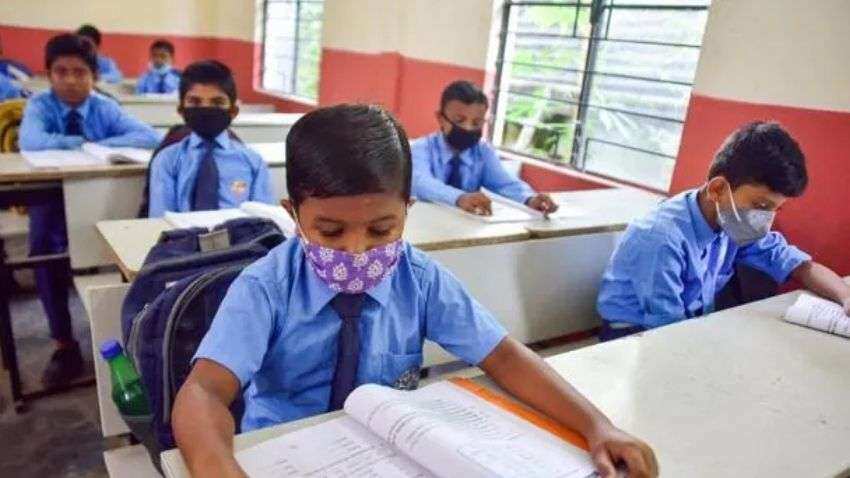
Long COVID in infected children: New study reveals top symptoms

Stomach ache, mood swings, rashes, trouble remembering or concentrating, fatigue are among the top symptoms of long COVID-19 or post-COVID condition in children aged 0-14 years, according to a new study.
The study published on Thursday (June 23) in The Lancet Child & Adolescent Health journal said children infected with the SARS-CoV-2 virus can experience symptoms of long COVID lasting more than two months.
Also read: Over 42 lakh deaths in India prevented by Covid vaccines in 2021: Lancet study
Long COVID symptoms were defined as new symptoms that presented after SARS-CoV-2 infection and were present for eight weeks after the positive SARS-CoV-2 test.
“The overall aim of our study was to determine the prevalence of long-lasting symptoms in children and infants, alongside quality of life, and absence from school or day care,” said Professor Selina Kikkenborg Berg, from Copenhagen University Hospital, Denmark.
“Our results reveal that, although children with a positive COVID-19 diagnosis are more likely to experience long-lasting symptoms than children with no previous COVID-19 diagnosis, the pandemic has affected every aspect of all young people’s lives,” Berg added.
Also read: BRICS must contribute for post-COVID economic recovery, says PM Modi
The survey conducted in Denmark was sent to mothers (proxy reporting) of children aged 0–14 years who had had a positive SARS-CoV-2 test between January 1, 2020, and July 12, 2021, and a control group matched (1:4) by age and sex. The survey asked questions about the 23 most common long COVID symptoms.
Responses to the survey were received from 10,997 (28.8%) of 38,152 cases and 33,016 (22.4%) of 147,212 controls between July 20, 2021, and September 15,2021.
The median age was 10.2 years in cases and 10.6 years in controls. 5,267 (48.2%) cases and 15,777 (48.3%) controls were female, and 5,658 (51.8%) cases and 16,870 (51.7%) controls were male.
Cases had higher odds of reporting at least one symptom lasting more than two months than did controls in the 0-3 years age group (478 (40%) of 1,194 vs 1,049 (27.2%) of 3,855, 4-11 years age group (1,912 (38.1%) of 5,023 vs 6,189 (33.7%) of 18,372, and 12-14 years age group (1,313 (46.0%) of 2,857 vs 4,454 (41.3%) of 10,789.
“The survey data did not include information regarding hospitalisation; therefore, we were not able to assess symptom burden in relation to hospital admission,” the study said.
“After the acute phase of SARS-CoV-2 infection, children can develop long COVID symptoms. We aimed to investigate the prevalence of long-lasting symptoms, the duration and intensity of symptoms, quality of life, number of sick days and absences from day care or school, and psychological and social outcomes in children aged 0–14 years who had been infected with SARS-CoV-2 relative to controls with no history of SARS-CoV-2 infection,” the researchers said.
The most common symptoms reported among children aged 0-3 years were mood swings, rashes, stomach aches, cough, and loss of appetite. Among those aged 4-11 years, mood swings, trouble remembering or concentrating, and rashes were most common; and among those aged 12–14 years, fatigue, mood swings, and trouble remembering or concentrating were most common.
“The occurrence of these symptoms after infection with SARS-CoV-2 does not necessarily mean that they are caused by the infection,” the study said.
According to the study, post COVID condition occurs in individuals with a history of probable or confirmed SARS CoV-2 infection, usually three months from the onset of COVID-19 with symptoms and that last for at least two months and cannot be explained by an alternative diagnosis. Common symptoms include fatigue, shortness of breath, cognitive dysfunction but also others and generally have an impact on everyday functioning. Symptoms may be new onset following initial recovery from an acute COVID-19 episode or persist from the initial illness. Symptoms may also fluctuate or relapse over time.
“Compared with controls, children aged 0-14 years who had a SARS-CoV-2 infection had more prevalent long-lasting symptoms. There was a tendency towards better quality-of-life scores related to emotional and social functioning in cases than in controls in older children. The burden of symptoms among children in the control group requires attention. Long COVID must be recognised and multi-disciplinary long COVID clinics for children might be beneficial,” the study said.


